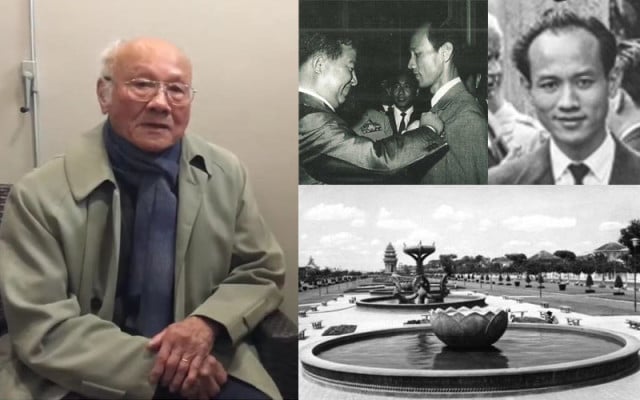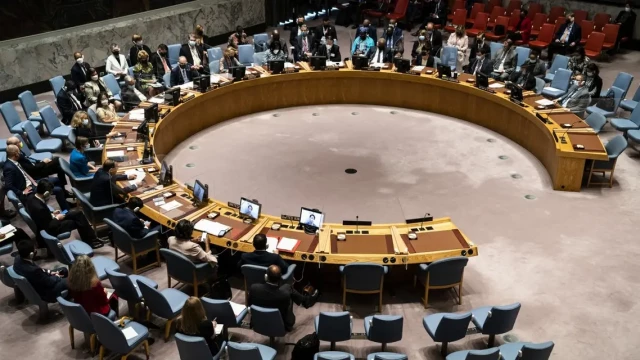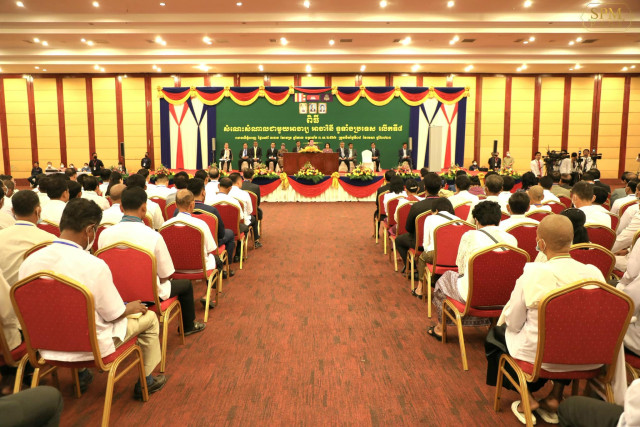Golden Age Architect Lu Ban Hap Has Passed Away

- By Po Sakun
- June 26, 2023 8:28 PM
PHNOM PENH – Cambodian architect Lu Ban Hap passed away on June 25 at 2:15 p.m. in Paris, France, due to old age. He was 92 years old.
According to Virak Varany, one of the co-founders of the Khmer Journey Group – a collective that documents Cambodia’s golden era heritage – and who talked to the architect’s niece, Meas Monda, the funeral is to be held in France on June 26, following the Khmer traditions.
“I was on a call with his niece earlier. A traditional funeral will be held [today], but I don’t know whether his body will be buried or cremated,” Varany said on June 26.
Lu Ban Hap was a renowned Cambodian architect from the late 1950s and 1960s, in a movement that was later qualified as the New Khmer Architecture, and that went hand in hand with late King Norodom Sihanouk’s Sangkum Reastr Niyum regime.
The architectural movement consisted in combining elements of the Modern Movement with features of the vernacular Khmer tradition of domestic buildings, such as pillars to protect from floods, or VV-shaped roofs to prevent direct sunlight. Designs that allowed natural ventilation were preferred to take account of the tropical climate.
While Vann Molyvann became the figurehead of that architectural era, Lu Ban Hap contributed to many projects that deeply reshaped the capital and other Cambodian cities.
In Phnom Penh, Ban Hap is the one behind the design of the Cambodiana Hotel on the riverside, the Kantha Bopha Pavilion in the compound of the Royal Palace, the Phnom Penh Cultural Center (also known as Chenla Theatre), the Toul Svay Prey High School (which was turned into the S-21 detention center during the Khmer Rouge regime, and later became the Tuol Sleng Genocide Museum) and the Independence Monument Park.
In 1963, along with Ukraine-born engineer Vladimir Bodiansky, he designed the iconic White Building, which was made to house moderate-income tenants, in the blossoming post-colonialism era. Despite being one of Phnom Penh’s most well-known buildings, Lu Ban Hap’s legacy was demolished in 2017 after the city stated it was too deteriorated to be renovated.
The site is now used by the company NagaCorp to build the Naga 3, a casino-restaurant-hotel complex with a 75-story high rise.
Being one of Cambodia’s most prominent architects, Lu Ban Hap not only left his mark in Phnom Penh but also in many of the country’s provinces.
He designed the Kandal Provincial Hall, the Battambang Sports Center, the Royal Residence on the Kirirom mountain, and the building of the Royal University of Kampong Cham, the province where he was born in 1931.
At the age of 14, Lu Ban Hap, moved to Phnom Penh to attend secondary school. He would later describe that time of his life as “hard”, living in a pagoda with “no money” and “far away from [his] family.”
In 1949, Ban Hap was part of the wave of Cambodian students who were sent to Paris to attend higher education thanks to an academic scholarship.
Convinced by Vann Molyvann to engage in architecture
While he first intended to become an engineer, he followed the advice of his fellow student Vann Molyvann – who had arrived in the French capital three years earlier – to study architecture.
“At that time, there were no qualified architects in Cambodia. Molyvann told me that this could be our chance and won me over,” he reportedly said to the Phnom Penh Post in 2015.
Once graduated, the young architect went back to Cambodia in 1960, where he was assigned to set up Phnom Penh municipality’s Department of Housing and Town Planning. Tep Phan, the city governor at that time, fully supported his modern vision and ideas.
Along with 12 other staff, Lu Ban Hap worked on urbanization, public park designs, waste management, public lighting, energy supply, and construction approval.
Under Ban Hap’s leadership, the capital city – the country’s heart – was equipped with a new look, according to the Khmer Journey Group. Some of his legacy still defines Phnom Penh’s shape.
While many believe Lu Ban Hap and Vann Molyvann were relatives, only because they were members of the same architectural renewal, Varany clarified that the two men had no blood ties.
“Uncle Hap was not a family member or a relative of Uncle Vann Molyvann. His niece told me that while we were on the phone. Uncle Vann Molyvann was in fact a senior to Uncle Lu Ban Hap,” Varany said.
The New Khmer Architecture movement came to an abrupt end when Lon Nol took power in 1970. With the end of Sihanouk’s Sangkum Reastr Niyum regime, architecture and arts were no longer a priority.
Despite the increasing turmoil of the civil war, and unlike many foreign-educated Cambodians, Lu Ban Hap decided to stay in Phnom Penh out of honor for his country. His wife, Armelle, and children went back to France.
In 1975, when the Khmer Rouge entered the capital, he was forced to evacuate the city, just like millions of Cambodians.
After three months in a labor camp, Lu Ban Hap fled the country on foot by the Southern border with Vietnam.
He then joined his wife and children in France, where they’ve rebuilt their life.
François Camps contributed to this story.















